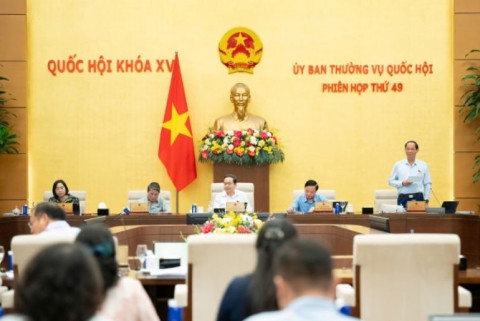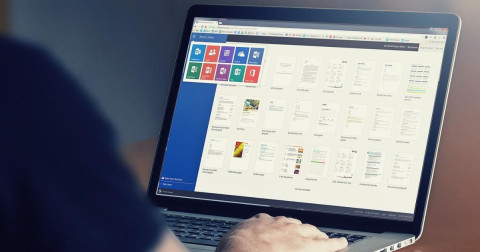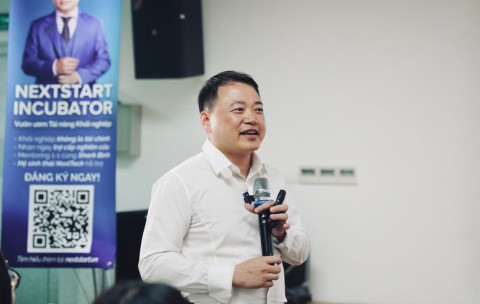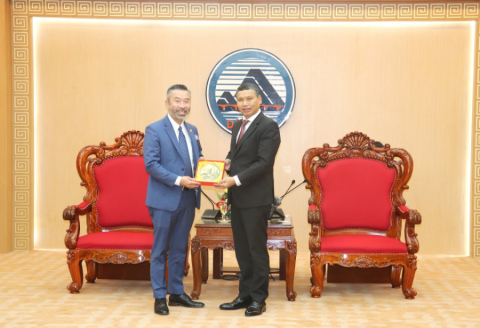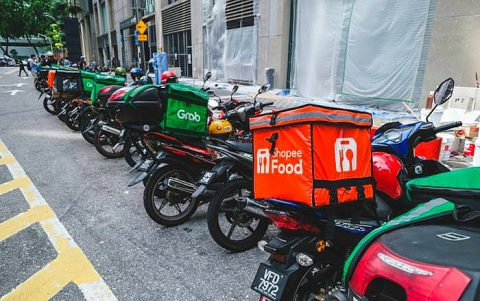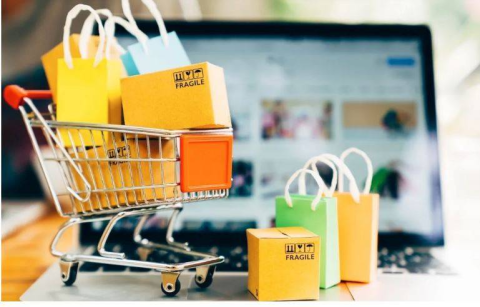Driving marketing efficiency by personalizing customer experience
- 148
- Digital
- 11:24 30/05/2022
DNHN - Brands are turning to push notifications and in-app messages to drive and optimize customer engagement.

Saurabh Madan, MoEngage general manager for Southeast Asia and ANZ, opened the Grab app to book a new ride. Immediately, he got an in-app message telling him that the taxi was on the way and would arrive in 4 minutes.
Shortly after completing the ride, while at work, Saurabh got a push notification from Grab notifying him that he got 46 reward points from the ride. At the same time, he received another notification from Twitter suggesting new content based on his activities on the app.
In 2007, the world witnessed a pivotal moment when Steve Jobs introduced the first iPhone with game apps, paving the way for the app ecosystem to flourish. Super apps such as Uber, Netflix, and Spotify were subsequently introduced, first on iOS and later on Android.
Previously, brands mostly engage with customers via email or SMS marketing. A major downsize with these channels was the inability to segment users, leading to a high level of junk messaging which irritated users.
During a trip to New Zealand 7 years ago, Saurabh Madan entered his email address in order to connect to a store's free WiFi. Thereafter, the store sent him numerous promotional emails even though he never opened any of them.
“If the store knows that out of the one million emails they sent per month, 20 per cent never got opened, they can stop sending emails to these users, which would help save cost and be better branding for them too”, explained Saurabh.

The rise of mobile apps opens up new communication avenues for brands such as push notifications and in-app messaging, allowing them to analyze user behavior and preference, and personalize content and promo activities. For example, Grab can send a 20 per cent promotional code for the next ride based on a user’s ride history.
POPS WorldWide, a Vietnam-based digital entertainment platform with over 400 million followers in Vietnam, Indonesia, Thailand, Singapore, and Phillippines. POPS Worldwide curates and offers a diverse library of digital-first content including music, comics, video entertainment, and edutainment for different age groups and demographics from the best content creators in South East Asia and around the world.
Through personalized content recommendations powered by MoEngage, POPs Worldwide achieve an increase of 19 per cent in product stickiness (DAU/MAU ratio), one of the most important ratios for digital entertainment brands.
According to MoEngage, in order to personalize and optimize push notifications, businesses need to understand user behavior, put them into different segments, and personalize messaging content for each user segment.
For example, if a customer put an umbrella into their shopping cart, but has yet to pay, the marketing manager will need to find a way to encourage that person to complete the purchase, either through email, in-app messaging, push notification, or SMS. But if the customer received a message from the brand which says 20 per cent discount on shoes, instead of an umbrella, there is a fair chance the customer would drop out, even after they’ve made it all the way to the cart.
“As the marketing manager, it's my job to understand what customers are interested in, not what I want to sell. If brands keep pushing what they want to sell, then they are not being customer-centric”, said Saurabh.
However, if brands push out too many notifications, users may get frustrated even if the messages are relevant. According to Saurabh Madan, 3 marketing messages a week and no more than one message a day are enough in most cases.
Still, this is a relative number. The ideal frequency depends on the brand and the industry. An e-commerce app like Lazada, which has many products to sell would be sending out more messages versus an insurance company, which will have fewer products, for example.
MoEngage has checks and balances and rules in place for brands to decide when and how many messages to send. “Let's say you receive a push notification. There will be a tick mark in our software that says if we’ve just sent a message to a customer, another message should not go out for another 12 hours”, explained Saurabh.
“To retain customers, it is critical to segment users the right way and send the right communication via the right channel”, concluded Saurabh.
Hoa Dang/ The leader
Related news
- CICON expands strategic alliances: A new step forward in Vietnam–Korea business connectivity
- What must Vietnamese enterprises do to maintain their position in the global supply chain?
- Vietnam advances cybersecurity law to boost digital sovereignty and business resilience
- Vietnam embraces digital tools to modernize public administration
- Administrative procedures for establishing the national technology exchange reduced to one application set
- Vietnam hits highest FDI inflow since 2009, fuels industrial real estate boom
- Foreign investors expected to open 150,000 new securities accounts in the next 5 years
- Government’s plan to implement Law on Digital Technology Industry approved
- Vietnam launches “Private Economy Panorama Model” to foster public-private national development
- Shark Nguyễn Hòa Bình: Hanoi will become the capital of startup innovation.
- Deputy Prime Minister Lê Thành Long meets with Osaka Governor Yoshimura Hirofumi to promote Vietnam–Japan cooperation.
- The master sales secrets of luxury king Bernard Arnault that make the world spend
- White House: When politics and technology join forces to rewrite the global AI order
- Da Nang proposes semiconductor cooperation with Oregon (USA)
- Quang Tri calls for investment in wind power plant project worth over VND 1,100 billion
- Hanoi receives two million visitors during the four-day National Day holidays
- Multiple MoUs signed in Da Nang to boost semiconductor development
- UNDP Resident Representative hails Vietnam as an emerging economic powerhouse
- How the UAE Transformed from Oil Wealth to AI Leadership?
- Success in business is always a human story
Đọc thêm Digital
Vietnam advances cybersecurity law to boost digital sovereignty and business resilience
In a significant step towards strengthening Vietnam’s digital defenses, the National Assembly Standing Committee convened on September 23 to review the draft revised Cybersecurity Law.
Vietnam embraces digital tools to modernize public administration
Across Vietnam, local governments are turning to digital platforms, QR codes, and AI-powered assistants to modernize public services—making them faster, more transparent, and more accessible to citizens.
Administrative procedures for establishing the national technology exchange reduced to one application set
Deputy Prime Minister Nguyen Hoa Binh has just signed Decision No. 2108/QD-TTg approving the plan to streamline internal administrative procedures within the state administrative system under the management of the Ministry of Science and Technology.
Government’s plan to implement Law on Digital Technology Industry approved
The Government has approved a plan to implement the Law on Digital Technology Industry (the Law) scheduled to take effect from January 1, 2026, according to a report from the Government News.
Shark Nguyễn Hòa Bình: Hanoi will become the capital of startup innovation.
Recently, in Hanoi, the seminar “Formulating City People’s Council Resolutions to Promote Science and Technology Development in Connection with the Implementation of Politburo Resolution No. 57-NQ/TW and the Capital Law No. 39/2024/QH15” was held.
Da Nang proposes semiconductor cooperation with Oregon (USA)
Leaders of Da Nang City have proposed that Oregon (USA) and the city explore cooperation opportunities in priority sectors such as semiconductor technology, logistics, and the development of Free Trade Zone (FTZ) infrastructure.
How the UAE Transformed from Oil Wealth to AI Leadership?
Once famed as the Gulf’s “oil brain,” the United Arab Emirates (UAE) is now redefining its global standing, emerging as one of the top three nations in artificial intelligence (AI), trailing only behind the United States.
ShopeeFood and Grab dominate Vietnam’s food delivery market
As 2025 begins, Vietnam’s food delivery market is expected to remain highly concentrated, with only a few platforms dominating the space unless new players enter the fray.
E-commerce in 2025: Explosive opportunities amid fierce competition
E-commerce in Vietnam continues to grow rapidly but faces intense competition and rising costs, forcing businesses to optimize strategies and technologies to maintain profitability.
The potential of the blockchain and cryptocurrency
Globally, the cryptocurrency market has seen significant growth. In Vietnam, despite not being officially recognized, cryptocurrencies like Bitcoin, Ethereum, Litecoin, and Ripple have emerged and are actively traded.


